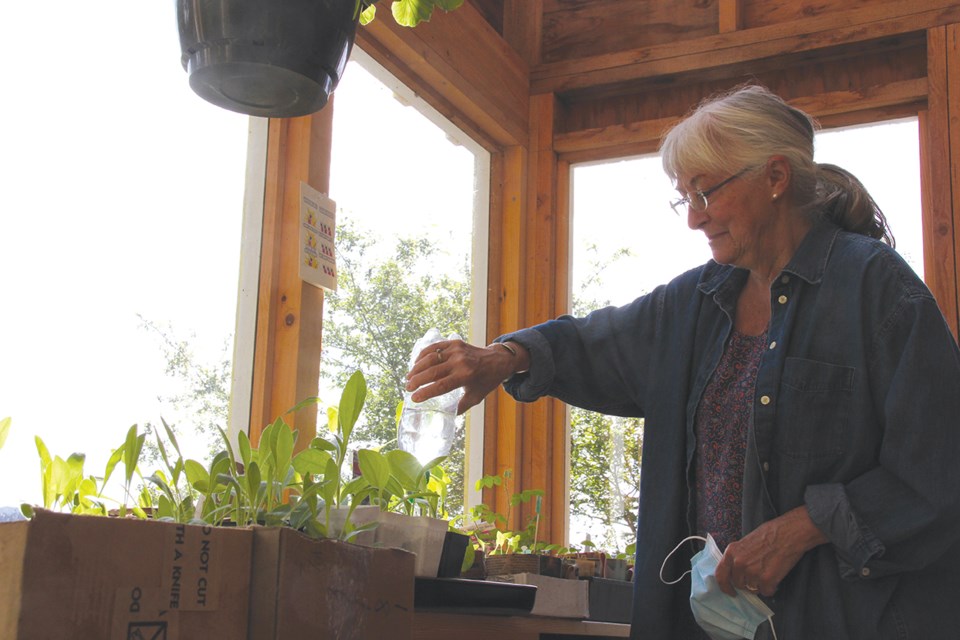You won’t find a lawn at Pat Kolterman’s house in Sechelt, but you will see a tremendous number of bees.
Instead of nondescript blades of grass, her outdoor space is teeming with native plants, garden beds growing food and flora placed to invite pollinators.
Kolterman is a volunteer Butterfly Ranger, one of more than 1,000 across Canada to take on the David Suzuki Foundation Butterflyway Project. She joined in January, after another ranger presented to her gardening club and shared the impact of declining insect populations on the environment.
The goal is to create a “butterflyway,” essentially a butterfly highway of connected habitat where pollinators can feed, rest, reproduce and pollinate.
“I just think lawns are a waste of space. So we have no lawn, and I just keep adding more native plants all the time,” Kolterman said.
Attracting pollinators
Since becoming a Butterfly Ranger, Kolterman has used her 40-plus years of gardening experience to help organizations and businesses in Sechelt learn more about attracting pollinators, designing butterfly gardens and sometimes providing native plants she’s grown herself.
Some of the people she’s helped so far include the Sunshine Coast Community Services Society and Davis Bay Elementary School and she also volunteers in the Botanical Garden’s vegetable garden.
Currently, she is helping the Botanical Garden create a hugelkultur, which is like a “lasagna garden,” Kolterman says, for the layers of plants and materials that create a raised mound prime for pollinators.
Anyone can create pollinator-friendly areas, even if they don’t have a garden.
Balconies and space along fencing can host and feed pollinators.
Kolterman recommends planting three to five plants in an area to attract the notice of butterflies and bees, especially a few with bright colours.
“If we had any new subdivision, I think it would be great if they just had to leave a strip with native plants in it,” she said.
Native plants on Kolterman’s list of recommendations include salal, salmonberry, tall Oregon-grape, and red-flowering currant for early blooms.
For mid-to-late season blooms, the Nootka rose, coastal strawberry, Kinnikinnick, and red elderberry are also suggested.
Late blooms on Kolterman’s list are oceanspray, nodding onion, pearly everlasting and Douglas aster.
“It’s really important when you have a butterfly garden to have a food source from early spring, right until late fall. Because the butterflies keep coming,” Kolterman said.
“You have to have host plants for them too, because they need the plants, the shrubs, the trees, to lay their eggs on. Then when they hatch, the larva needs to eat those leaves.”
Plants that are native to the area and bloom through the season are best for supporting pollinators, as “the native bees have evolved with the native plants” in how to extract the most pollen.
1,000 volunteers
The initiative first took flight in 2017 in five communities and has since blossomed in more than 100 communities in Canada with more than 1,000 volunteers and 15 butterflyways. More than 400 community volunteers joined in 2020 alone.
In B.C., there are four butterflyways – in Richmond, Vancouver, North Vancouver and Victoria. More communities in the province are on their way to creating a similar stretch of habitat for pollinators including in Sechelt, Gibsons and Powell River on the Sunshine Coast.
Kolterman said the District of Sechelt has done well by planting native plants throughout the area, and she hopes council will declare June 21 to 27 as Pollinator Week.



